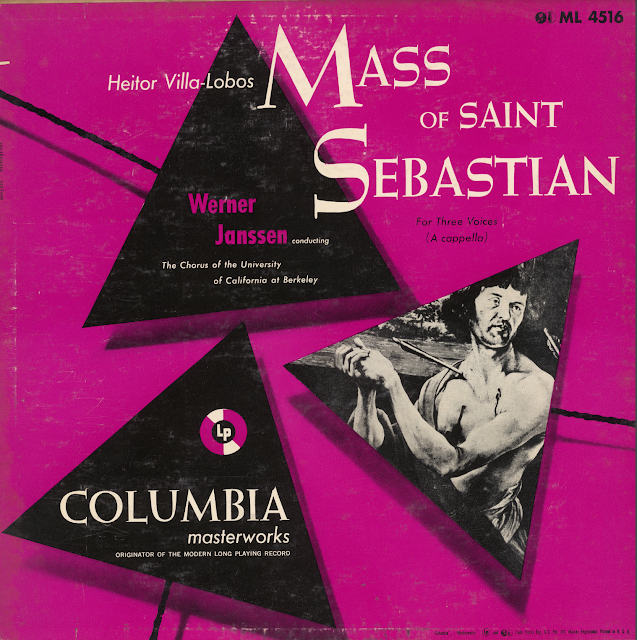From 1963, Latin American Fiesta, with Leonard Bernstein conducting the New York Philharmonic.
The most substantial work is Carlos Châvez's Sinfonia India; this is a fine version indeed. His fellow Mexican composer, Silvestre Revueltas, is well represented by the ballet Sensemayá. Two slight Brazilian dances complete the program: the Batuque of Villa's close friend, Oscar Lorenzo Fernândez; and the Brazilian Dance of one of the leading composers of the generation after Villa-Lobos, Mozart Camargo Guàrnieri. What a wonderful mix of music.
Early in 1963, Leonard Bernstein began planning his Young People's Concert: The Latin American Spirit, which was televised on March 8th of that year. As you can see, he wasn't quite sure which works might be on the actual program.
There's BB#5, still the headline piece, with the Revueltas ballet, the Fernândez Batuque and Copland's Danzòn Cubano. The WSS at the end? That would be the Symphonic Dances from West Side Story, (which would have fit beautifully on this album if there had been more room). Lenny crosses out the Guarnieri, and considers, but also crosses out, music by Gottschalk and Morton Gould.
Luckily we can watch this wonderful lecture/concert on YouTube; it's a landmark in "music appreciation" - in many ways it transcends that genre. Woke Lenny shows up right away: I love him!
Bernstein notes that Villa-Lobos had only been dead for three years at the time; this is contemporary music! He then gives an admirably concise and accurate explanation of the title.


















.jpg)















